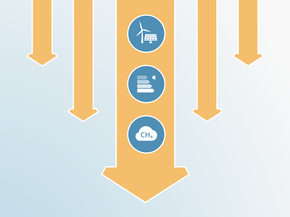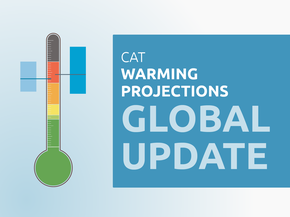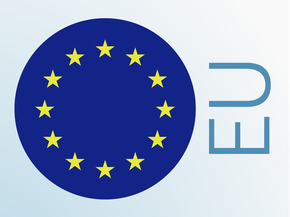Targets
Target Overview
Russia updated its 2030 NDC in November 2020. It contains an emissions reduction target of at least 30% below 1990 levels by 2030. This does not represent an increase in climate action, as it is simply the lower bound of the previous target’s range (25–30%). The CAT estimates that Russia can easily reach this target with current policies and should, therefore, submit a stronger 2030 target.
In September 2022, the Russian government submitted its long-term climate strategy (LTS) to the UNFCCC. The net zero GHG emissions target for 2060 included in the LTS relied on Russia’s land use, land use change and forestry (LULUCF) sector’s negative emissions more than doubling between 2030 (-539 MtCO2e) and 2050 (-1200 MtCO2e), which has since been nearly achieved by recalculating the LULUCF sector’s carbon absorption capacity.
| RUSSIAN FEDERATION - Main climate targets |
|---|
| 2030 NDC target | |
|---|---|
| Formulation of target in NDC | Limiting GHG emissions to up to 70% compared to 1990 levels by 2030, taking into account the maximum possible absorptive capacity of forests and other ecosystems, and subject to sustainable and balanced socio-economic development of the Russian Federation. |
| Absolute emissions level in 2030 excl. LULUCF |
Up to 2,449–2,712 MtCO2e [14–22% below 1990] [23–36% above 2010] |
| Status | Submitted on 25 November 2020 |
| Net zero target & other long-term targets | |
|---|---|
| Formulation of target | Achieve a balance between anthropogenic emissions of greenhouse gases and their absorption no later than 2060. |
| Absolute emissions level in 2050 excl. LULUCF | 558–1,199 MtCO2e |
| Status | Submitted on 5 September 2022 |
NDC Updates
All countries were expected to submit, in February 2025, an updated NDC containing 2035 emissions reduction targets. Russia submitted its 2035 NDC to the UNFCCC on September 29, 2025.
In August 2025, President Putin signed the 2035 emissions target into law, aiming for emissions in 2035 to be 65–67% of 1990 levels, or a 33–35% emissions reduction below 1990 levels (incl. LULUCF) (President of Russia, 2025). This equates to an emissions level of 2113–2308 MtCO2e in 2035 (excl. LULUCF). Putin’s executive order forms the basis of Russia’s 2035 NDC (Ministry of Economic Development of the Russian Federation, 2025). Our full assessment of Russia's 2035 NDC can be found here.
Russia formally submitted an updated 2030 emissions target to the UNFCCC in November 2020. The update did not strengthen the country’s 2030 target in any real sense, as the targeted emissions level was higher than Russia’s own 2030 emissions projections at the time (the “With Measures” scenario in the government’s Fourth Biennial Report) (Russian Federation, 2019). This still holds true based on the CAT’s quantification of Russia’s 2030 target which continues to allow Russia’s emissions to increase unchecked and sits well above our current policy projections for Russia.
We have updated our methodology for quantifying Russia’s 2030 target in response to Russia’s significant recalculation of its historical LULUCF emissions in its national inventory report from 2024. We also consider a LULUCF range to accommodate for the uncertainty of Russia’s LULUCF projections. For the full details of our methodology for quantifying Russia’s 2030 target, please see our Assumptions tab.
Russia’s 2030 target of a 30% reduction below 1990 levels replaces its previous target of 25–30%. The updated target amounts to a 2030 emissions level of 2,449–2,712 MtCO2e (excluding LULUCF), which is equivalent to 14–22% below 1990 levels according to CAT estimates. Given that our current policy projections show 2030 emissions reaching 2,067–2,145 MtCO2e (excluding LULUCF), or 32–34% below 1990 levels, the target does not represent an actual additional cut to emissions (Russian Federation, 2022a).
Russia’s 2020 NDC is stronger on paper but does not alter the real-world trajectory of its emissions. Maintaining the same level of real-world emissions in 2030 fails the Paris Agreement’s requirement that each successive NDC should represent a progression beyond the current one.
| RUSSIA — History of NDC updates | 2019 NDC | 2020 NDC update |
|---|---|---|
| 1.5°C compatible |
|
|
| Stronger target | N/A |
|
| Economy-wide coverage |
|
|
| Fixed/absolute target |
|
|
| 2019 NDC | 2020 NDC update | |
|---|---|---|
| Formulation of target in NDC |
Unconditional target: Limiting GHG emissions to 70-75% of 1990 levels by 2030, subject to the maximum possible account of absorbing capacity of forests. |
Unconditional target: Limiting GHG emissions to up to 70% compared to 1990 levels by 2030, taking into account the maximum possible absorptive capacity of forests. and other ecosystems, and subject to sustainable and balanced socio-economic development of the Russian Federation. |
| Absolute emissions level excl. LULUCF |
Unconditional target: 2,449–2,870 MtCO2e |
Unconditional target: Up to 2,449–2,712 MtCO2e |
| Emissions compared to 1990 and 2010 excl. LULUCF |
Unconditional target: 9-22% below 1990 emissions by 2030 23-44% above 2010 emissions by 2030 |
Unconditional target: 14-22% below 1990 emissions by 2030 23-36% above 2010 emissions by 2030 |
| CAT rating |
Overall rating*: Critically insufficient |
NDC target against modelled domestic pathways: Critically insufficient NDC target against fair share: Critically insufficient |
| Sector coverage | Economy-wide | Economy-wide |
| Separate target for LULUCF | No | No |
| Gas coverage | All greenhouse gases | All greenhouse gases |
| Target type | Absolute emissions reduction from a base year | Absolute emissions reduction from a base year |
| Explanation why the target is a fair contribution towards the global goal | Not provided | Not provided |
| Followed guidance in Decision 4/CMA.1 on target transparency | Not applicable | Yes |
* Before September 2021, all CAT ratings were based exclusively on fair share and only assessed a country’s target.
Target development timeline & previous CAT analysis:
- 25.11.2020: Russia formally submits NDC update to UNFCCC
- 04.11.2020: Russia adopts new 2030 target
- 23.03.2020: Russia proposed updated 2030 target
CAT rating of targets
The CAT rates NDC targets against each country’s fair share contribution to global climate change mitigation, considering a range of equity principles including responsibility, capability, and equality. The CAT also rates NDC targets against indicative national emissions from global least-cost emissions pathways (called modelled domestic pathways). For assessing targets against the fair share, we consider both a country’s domestic emissions reductions and any emissions it supports abroad through the use of market mechanisms or other ways of support, as relevant.
Russia has left open the possibility of using market mechanisms to achieve its target but has not specified the extent to which it might use them. In the absence of this information, we have rated its NDC target against both global domestic pathways and fairness metrics.
The CAT rates Russia's NDC target as "Critically insufficient" when rated against modelled domestic pathways, and "Critically insufficient" when rated against its fair share contribution. We assess Russia’s total fair share contribution by considering its emissions reduction target and its climate finance. Russia’s climate finance is not sufficient to improve the fair share rating.
The CAT rates Russia’s updated NDC 2030 emissions target of at least a 30% reduction below 1990 levels (incl. LULUCF) as “Critically insufficient” when compared with modelled domestic emissions pathways.
The “Critically insufficient” rating indicates that the 2030 target reflects minimal to no action and is not at all consistent with modelled domestic pathways limiting warming to 1.5°C. If all countries were to follow Russia’s approach, warming would exceed 4°C.
Although Russia has not submitted a 2030 NDC target since the last CAT update, our rating of it has changed from “Highly insufficient” to “Critically insufficient.” This change is due to a methodological update of our modelled domestic pathways (MDPs), which now also incorporate the latest global least-cost pathways from the IPCC Sixth Assessment Report, and a change in our methodology for quantifying Russia’s 2030 NDC.
We rate Russia’s updated 2030 NDC target as “Critically insufficient” when compared with its fair share emissions allocation. The “Critically insufficient” rating indicates that Russia’s target, compared to what its fair share would be in 2030, reflects minimal to no action and is not at all consistent with limiting warming to 1.5°C. Russia’s target is not in line with any interpretation of fairness.
Substantial improvements are needed: some should be made to the 2030 target itself; others could come in the form of additional support for emissions reductions achieved in developing countries in the form of finance. If all countries were to follow Russia’s approach, warming would exceed 4°C.
Russia’s international climate finance is rated as “Critically insufficient” (see below) and is not enough to improve Russia’s fair share rating.

Russia’s international public finance contributions are rated as "Critically insufficient." Under the CAT’s methodology, Russia has not made any substantial contribution to international climate finance since the adoption of the Paris Agreement. To improve its rating, Russia needs to urgently both increase its financial contributions and stop funding fossil fuels abroad.
Russia has provided minimal climate finance to developing countries. There has been some bilateral support for individual developing countries through Rosatom, which supports the development of nuclear power (Russian Federation, 2024b). Russia’s bilateral nuclear agreements are not considered development finance as defined by the OECD Development Assistance Committee criteria, and are therefore not considered climate finance by the CAT. See our climate finance methodology for information on how we assess a country’s contribution to international climate finance.
Russia continues to finance fossil fuels abroad. Russian state companies provide significant bilateral financial and technical support to fossil fuel projects in developing countries (Mouratidi, 2023; Volcovici, 2024). At the multilateral level, Russia is obstructing multilateral institutions from financing renewables over fossil fuels (Civillini, 2023).
Further information on how the CAT rates countries (against modelled domestic pathways and fair share) can be found here.
Net zero and other long-term target(s)
Russia approved its "Strategy of socio-economic development of the Russian Federation with low greenhouse gas emissions by 2050" in October 2021 and submitted it to the UNFCCC in September 2022 as its long-term climate strategy (LTS) (Russian Federation, 2021d, 2022b).
As part of this strategy, Russia has committed to reaching net zero greenhouse gas (GHG) emissions by 2060. The strategy also includes a target to reduce GHG emissions by 80% below 1990 levels by 2050, leaning heavily on negative emissions from the LULUCF sector, which are projected to more than double between 2030 and 2050, from -539 MtCO2e to -1,200 MtCO2e. Russia’s recent recalculation of the LULUCF sector’s absorption capacity means that this -1,200 MtCO2e target has effectively already been met.
The enormous increase in negative emissions achieved through the land use, land use change and forestry (LULUCF) sector means that steep reductions in emissions from the combustion of fossil fuels would not be necessary to achieve net zero emissions. We evaluate the target as "Poor."
For the full analysis click here.
Further analysis
Latest publications
Stay informed
Subscribe to our newsletter




